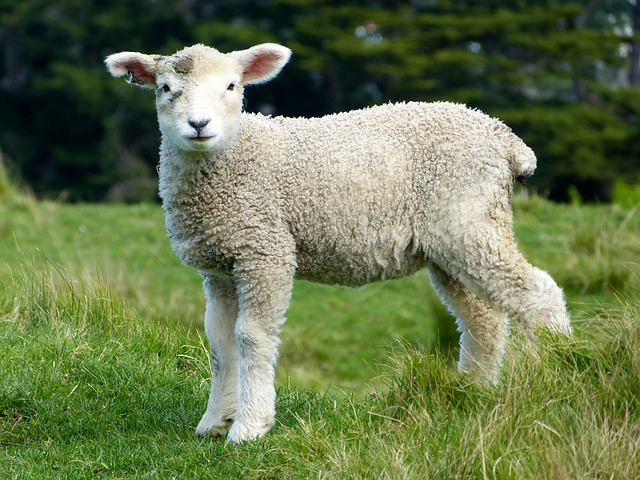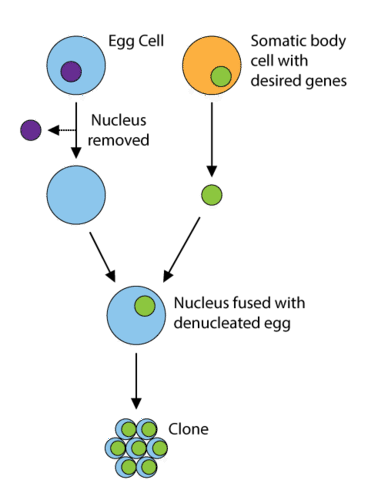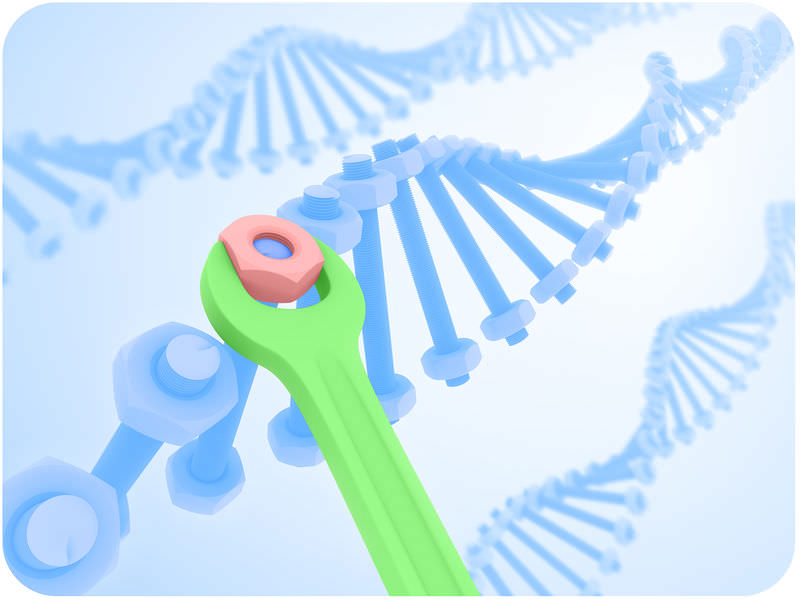READ: Genetic Changes Caused by Humans
READ: Genetic Changes Caused by Humans

Organisms inherit traits from their parents. By selecting for desirable traits in breeding of plants and animals, humans can cause the inheritance of those traits. For example, humans domesticated dogs by selecting young wolves that were calm and obedient. Look for other examples of humans affecting the inheritance of traits and see how it affects your life today.
Artificial Selection
Artificial selection occurs when humans select which plants or animals to breed in order to pass on specific traits to the next generation.Two organisms with desirable traits are crossed to produce offspring with those same traits. By selecting and crossing individuals with the traits we want for several generations, scientists are able to increase the chance that the offspring will have those desirable traits.
One of the areas where artificial selection gives the most benefit is in farming and ranching. For example, farmers practice animal husbandry where a farmer may choose to breed only cows that produce the most milk. Farmers would also avoid breeding cows that produce less milk. In this way, selective breeding of the cows would increase milk quality and quantity. By selecting the individuals with the traits we want for reproduction, farmers can improve the quality of their animals.
Even plants are selectively bred. Fruits and vegetables are bred to increase size, flavor, and production. Generations of farmers have harvested corn with the largest kernels to produce the corn we have today.
Over time, selective breeding has modified teosinte's few fruitcases (left) into modern corn's rows of exposed kernels (right). Selective breeding of crops such as corn and wheat gave early humans the freedom to develop civilizations.
Genetic Modification
Genetic engineering is a research field that tries to find ways to change the genetics of living organisms so that the organisms have more desirable traits to people.
This technology has led to less crop damage and increased farm production. This allows farmers to produce more food on less land. Crops have also been engineered that produce better tasting food with a longer shelf life.

Farming is not the only field that benefits from genetic engineering. Advances in medical research have improved life for people with certain diseases. Diabetes is a disease that limits the body’s ability to create or use an important hormone called insulin. Insulin is important because it helps to remove sugar from the bloodstream and put it in cells where it can be used by the mitochondria to produce energy. Until a few years ago, insulin was extracted from non-human sources. It worked, but was not a perfect solution to the problem. In recent years scientists have found ways to engineer (create) human insulin using bacteria. The human gene that produces insulin is inserted into bacteria. The bacteria then produce human insulin as they reproduce. Then insulin is then harvested from the bacteria and used in patients so that diabetics can have a more normal life.
Cloning

Cloning is the process of creating an exact genetic replica of an organism. The clone’s DNA is exactly the same as the parent’s DNA. Bacteria and other single-celled organisms have long been able to clone themselves through asexual reproduction. Plants can also reproduce asexually. In animals, however, cloning does not happen naturally. In 1997, that all changed when a sheep named Dolly was the first large mammal ever to be successfully cloned. Other animals can now also be cloned in a laboratory.
The process of producing an animal like Dolly starts with a single cell from the animal that is going to be cloned. DNA from a cell from one female is inserted into an empty egg cell from a different female. Because a complete set of DNA is injected, the cell is tricked into thinking it has been fertilized. It then grows and develops inside the host mother’s womb.
To clone an animal, a nucleus from the animal’s cells are fused with an egg cell (from which the nucleus has been removed) from a donor, creating a new zygote.
Is Cloning Easy?
Cloning is not always successful. Most of the time, this cloning process does not result in a healthy adult animal. The process has to be repeated many times until it works. In fact, 277 tries were needed to produce Dolly. This high failure rate is one reason that human cloning is banned in the United States. There are also many additional ethical considerations related to human cloning.
Gene Therapy
Gene therapy is the insertion of genes into a person’s cells to cure a genetic disorder. Gene therapy could not be used to cure diseases that are caused by viruses, like AIDS. It only works to fix disorders caused by a faulty gene. The patient would have had this disorder from birth.
Gene therapy uses a vector, or carrier molecule, for the gene. The vector helps incorporate the desired gene into the patient's DNA. Usually this vector is modified viral DNA in which the viral genes have been removed. Don't worry, the virus used in gene therapy has been deactivated, meaning it is not harmful to the human body.Though gene therapy is still in experimental stages for diseases like hemophilia and cystic fibrosis, the common use of this therapy may occur during your lifetime. As more research is done and technology improves, scientists will continue to learn more about the genetics of living things and find new ways to improve life on earth.
Summary
- Artificial selection occurs when humans select which plants or animals to breed in order to pass on specific traits to the next generation.
- Genetic engineering is a research field that tries to find ways to change the genetics of living organisms so that the organisms have more desirable traits to people.
- Cloning, or creating an exact replica of an organism, is now possible for many animals.
- There are many ethical considerations related to human cloning, and it is now illegal to clone humans in the United States.
- Gene therapy is the insertion of genes into a person’s cells to cure a genetic disorder.
- Gene therapy is still in the experimental stages, but some trials have been successful.



